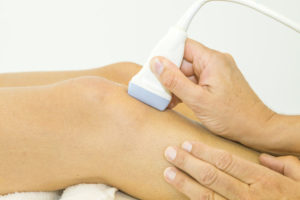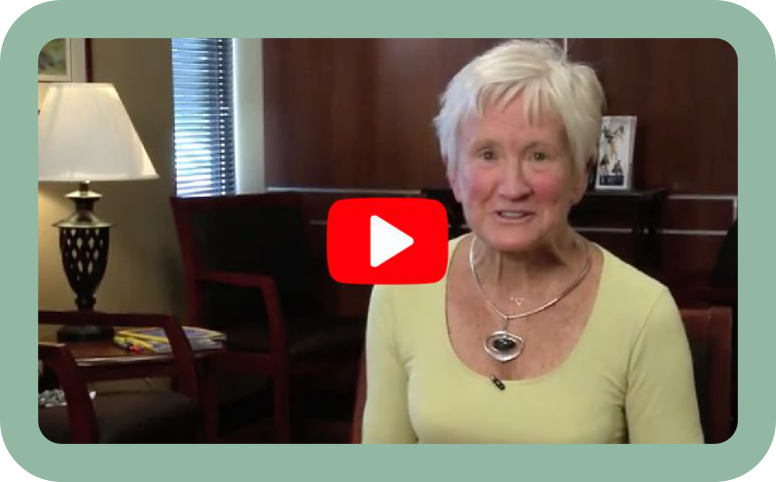Contact us today.
How is Ultrasound Used to Diagnose Venous Disorders
 What Is Ultrasound?
What Is Ultrasound?
Ultrasound is a safe, non-invasive exam tool used in the diagnosis and detection of many medical problems.
Non-invasive means the ultrasound procedure does not require the use of needles, dyes, radiation or anesthesia. Ultrasound is non-ionizing, meaning it produces no radiation, and has no known side effects to either the technologist performing the examination or the patient being examined.
During an ultrasound exam, the technologist will apply a hypo-allergenic water-based gel to the area to be evaluated. Then a small, microphone-like device called a transducer is passed over the gel coated area to be examined. The transducer emits high-frequency sound waves (too high to be heard by humans) that are transmitted into the body and reflect off the vessels or organs of interest to produce images of the area being examined. Ultrasound can also be used to measure the blood flow in specific blood vessels. Noises might be heard while the technologist listens to the blood flow.
What is a Registered Vascular Technologist?
When scheduling a venous ultrasound you should schedule it with a facility that uses a Registered Vascular Technician (RVT) to perform the exams. RVTs must complete a rigorous course of education and training in the complexities of vascular ultrasound. To become registered, they must pass a two-part test demonstrating their mastery of both the theoretical physics of vascular ultrasound and the actual performance of the vascular ultrasound procedures. In order to main this certification, RVTs must participate in yearly continuing education activities that are relevant to the specific field of vascular ultrasound. Having your venous ultrasound performed by an RVT will ensure that you receive a thorough, detailed exam.
Vascular technologists prepare patients for the examination by explaining the procedure; obtaining a pertinent clinical history through direct questioning and review of the patient’s prior records; and performing a physical examination that usually involves observation of the patient. The vascular technologist then performs the examination, and records the results. Once the data is compiled by the technologist it is reviewed and interpreted by the physician. In our practice, the RVT also assists the physician in performing procedures such as endovenous laser ablation and ultrasound-guided sclerotherapy that are used to treat the diagnosed venous disorders.
How is Ultrasound Used to Diagnose Venous Disorders?
In vascular ultrasound, the reflected sound waves are processed to form high resolution, images of the blood vessels (B-mode imaging) and to measure the speed and direction of the blood (Doppler Ultrasound). Instruments with the capability of acquiring both B-mode imaging and Doppler information are referred to as duplex scanners. These Duplex Doppler images are what we use in our practice to diagnose problems such as venous reflux, venous insufficiency and varicose veins.
- During a venous ultrasound exam of the legs, the technologist will usually examine both the deep and superficial parts of the venous system. Other more specific areas may also be examined based on the recommendations of the referring physician and the patients’ clinical symptoms.
- During examination of the deep venous circulation, the femoral vein, the common femoral vein and the popliteal vein are examined to look for venous reflux and also to rule out the presence of blood clots (usually referred to as DVTs). A DVT (or deep vein thrombosis), is a very serious condition that must be closely monitored by a physician. DVTs usually cause significant pain and swelling in the affected leg. Untreated DVTs can travel out of the leg veins to other parts of the body and cause serious complications such as pulmonary embolism (PE), stroke and even death.
- During examination of the superficial venous system, the technologist will examine the Great and Small Saphenous Veins and any tributary veins to look for the presence of venous reflux. Venous reflux in any of these vessels is what leads to the diagnosis of venous insufficiency and varicose veins.
Upon completion of the exam, a physician reviews and interprets all of the images and blood flow measurements.
Interested in a Venous Ultrasound Test?
Click on this link to schedule an appointment online or call us at (847) 468-9900: Get Relief Now!

